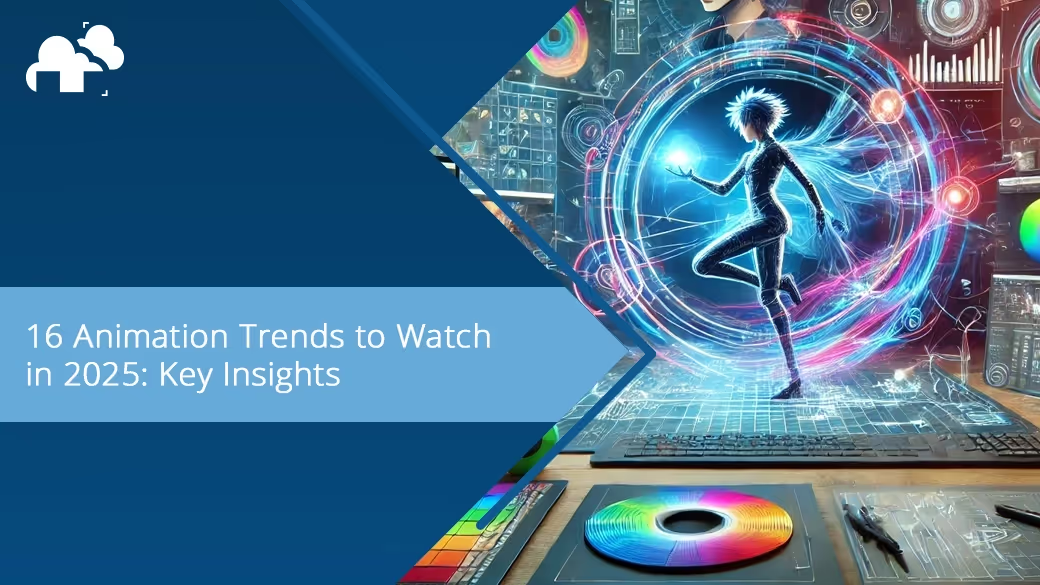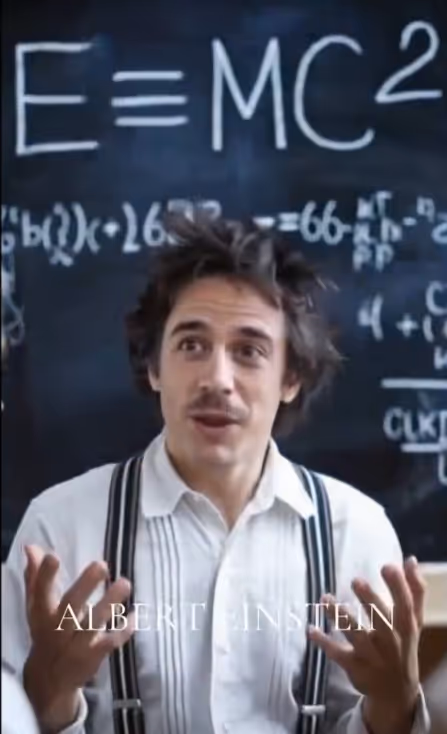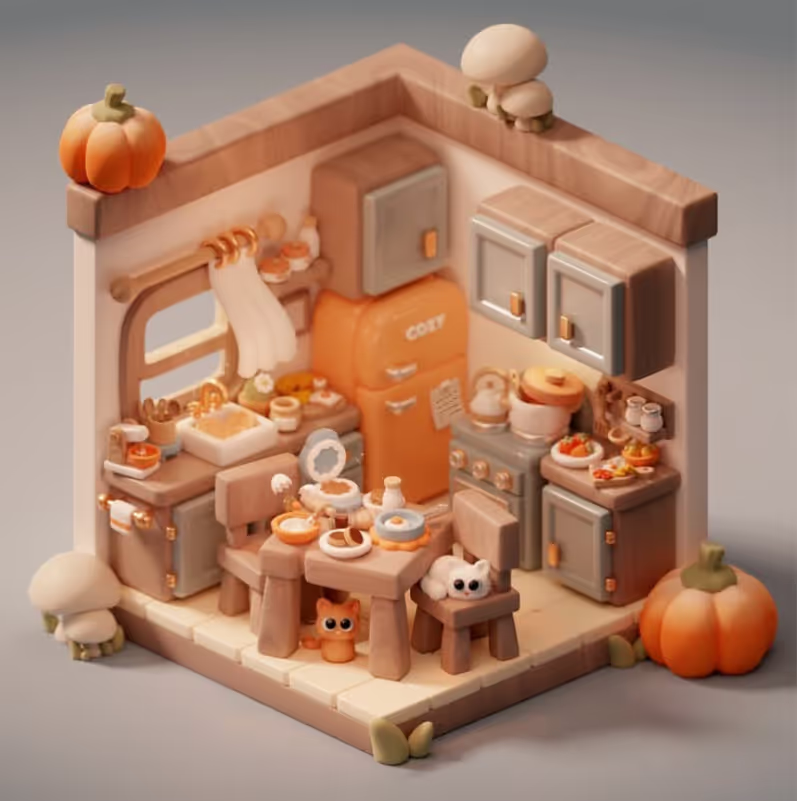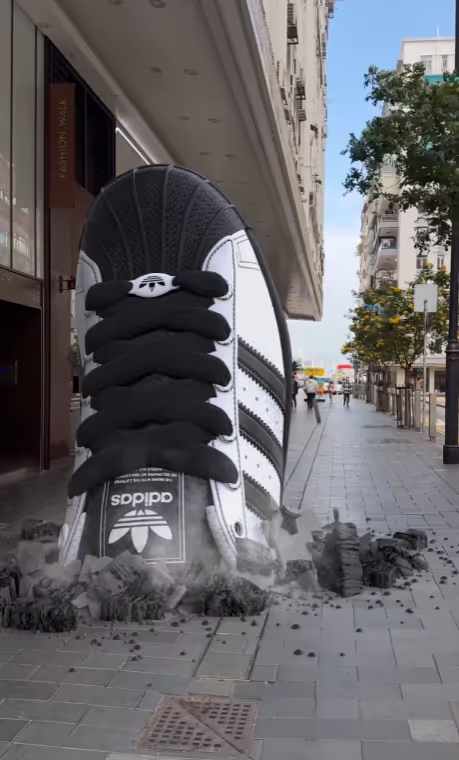
Since writing this article, the animation industry has changed in some aspects in terms of the latest trends. With new technologies and adaptations, new artistic expressions have emerged and are now captivating audiences in 2025. Although most trends are still dominating such as AI-Integrated and Mixed 2D and 3D animation, we can see new ways of creating and applying them into motion graphics, as well as 4 new trends.
As we move into 2025, these trends will continue to evolve, influencing everything from big-budget films to short-form social media content. Whether you’re an independent creator or part of a studio, keeping up with these changes will be essential for staying ahead in the industry. Let's explore the key animation trends that will shape the future.
The blend of 2D and 3D animation techniques is still dominating as an animation trend in 2025. The success of films and series like Spider-Verse and Arcane has cemented the popularity of merging the flat, stylistic expressions of 2D with the depth and realism of 3D.
This trend combines the depth and realism of 3D with the charm and expressiveness of 2D animation, often using painterly textures or hand-drawn effects. In some cases, the roles are reversed: 2D animation mimics 3D depth through perspective tricks and shading, creating a unique hybrid style. The blending of these two mediums allows for visually stunning animations that break the traditional constraints of either style.
Artificial intelligence, another trend that is still going strong. Streamline tasks and workflows are getting easier and better, as well as new creative possibilities. AI-driven tools are being used to generate smooth transitions, facial animations, and even entire scenes with minimal human intervention. A great example is the viral AI-generated transformation video of Albert Einstein, created by EvolutionTime.AI, which seamlessly morphs his appearance over the years. These technologies allow for greater efficiency in production, making it easier for animators to achieve high-quality results in less time.

Beyond technical improvements, AI is also playing a significant role in style transfer and animation generation, helping artists experiment with different visual aesthetics. Machine learning algorithms can analyze an animator’s style and replicate it across multiple frames, reducing the need for manual in-betweening
Anthropomorphic animation is reaching new heights in 2025, with non-human characters displaying more lifelike emotions and expressions than ever. Advances in AI-driven facial animation and real-time rendering enable richer storytelling, making these characters more dynamic and relatable.
Beyond fantasy creatures, robots, AI avatars, and even abstract objects are adopting human-like traits, deepening audience engagement. This trend blurs the line between reality and fiction, pushing animated storytelling into exciting new territory.
Collage animation continues to thrive in 2025, combining photographs, textures, and mixed media to craft visually striking narratives. This handcrafted style stands out in an era of sleek digital animation, offering a nostalgic yet fresh aesthetic.
Beyond its artistic appeal, collage animation remains a powerful tool for social commentary, music videos, and experimental storytelling, making it a go-to choice for creators seeking a unique, expressive medium.
Typography animation has become increasingly popular, especially on social media platforms. With shorter attention spans and the need for quick engagement, animated words and key phrases are being used to capture interest. This is particularly evident in music videos and lyric animations, where dynamic typography enhances the viewing experience.
Beyond entertainment, animated typography is becoming a powerful tool for branding and advertising. Businesses are using kinetic text to create eye-catching promos, product explanations, and social media ads that immediately grab the viewer’s attention. The integration of motion graphics with AI-driven text effects is making typography animations more sophisticated and versatile.
The ‘oddly satisfying’ animation trend continues to captivate audiences in 2025, with smooth, looping motion graphics designed to mesmerize and relax viewers. From hypnotic liquid flows to seamless transformations, these animations are widely used in mental wellness apps, branding, and live event visuals.
A growing sub-trend involves 3D simulations showcasing how objects with varying polygon counts react differently to forces like gravity, fluid dynamics, or soft-body physics. These visually engaging experiments highlight the intersection of art and physics, making complex simulations both educational and aesthetically compelling.
While minimalist aesthetics remain a popular choice, especially in corporate animations where simplicity enhances clarity, there is also a new variation emerging with a cozy minimalist look, featuring soft edges, rounded shapes, and warm colors, creating a more inviting feel. This trend is widely used in explainer videos, branding animations, and children’s content.

Minimalist designs are not just about simplicity but also about evoking emotions. Using carefully chosen color palettes, subtle gradients, and organic motion, animators create a sense of warmth and approachability. This design philosophy aligns with the growing demand for gentle, stress-free visuals in an overstimulating digital world.
The use of bold, high contrast colors in animation is stronger than ever in 2025, aligning with trends in digital media that favor eye-catching, saturated visuals. Neon hues, dynamic gradients, and unexpected color pairings make animated content pop, especially on ultra high resolution screens.
Beyond aesthetics, color is being used more deliberately in storytelling, shifting palettes to evoke emotions, enhance mood, and create deeper narrative impact. This trend is especially prominent in stylized films, advertising, and content aimed at younger, digital-savvy audiences.
As animation becomes more saturated, artists in 2025 are breaking away from traditional styles, embracing abstract visuals, unconventional techniques, and nonlinear storytelling. From hand-painted frames to glitch aesthetics and dreamlike motion, these experimental approaches challenge viewer expectations and create deeply immersive experiences.
A standout example is the rise of animations mimicking real-world artistic techniques, such as stop-motion sequences that resemble oil paintings in motion or digital animations that emulate ink bleeding on paper. These bold styles not only captivate audiences but also redefine how stories are told in modern animation.
As VR technology advances, the trend of VR continues to thrive in 2025 as animated content designed for virtual spaces is becoming more sophisticated. Interactive storytelling, fully animated VR films, and real-time animated experiences are pushing the boundaries of traditional animation formats. With headsets like Meta Quest and Apple Vision Pro, audiences can now engage with animated narratives in ways never before possible.
VR animation also presents unique challenges, requiring animators to rethink camera movement, perspective, and interactivity. Unlike traditional animation, where viewers are passive observers, VR places them inside the story, demanding a new approach to composition and pacing. Studios are developing innovative techniques to guide the viewer’s attention while maintaining creative control over the experience.
Similarly to VR, Augmented reality continues to thrive as it transforms how we interact with the real world. This technology continues to merge the digital and physical worlds, with one emerging trend being oversized digital objects seamlessly integrated into live footage. Brands and advertisers are using AR to create immersive experiences that stand out in crowded digital spaces. These digital overlays are not just limited to marketing; they are also being used in education, live performances, and interactive storytelling, providing new ways to engage audiences.

With the rise of AR-powered devices and apps, animation is no longer confined to screens. Users can experience animated characters interacting with their real-world surroundings, making entertainment more interactive and personalized. As AR technology becomes more advanced, we can expect a shift toward fully immersive animated experiences that blur the lines between reality and fiction.
In the last article, the incorporation of grainy textures and gradients in animation trended as it provided a layer of depth and authenticity that resonated with a contemporary audience looking for a more organic feel in digital content. However, this has continued to grow and has now evolved into a whole branch of nostalgic revival. retro-inspired visuals are making a strong comeback. Animations featuring film grain, VHS effects, scan lines, and aged color palettes are being used to evoke nostalgia and create a distinct mood. This style is particularly popular in music videos, video game cinematics, and brand marketing campaigns that aim to capture the essence of past decades.
Retro aesthetics go beyond simple visual effects; they also influence storytelling and animation techniques. Creators are revisiting traditional frame rates, cel shading, and hand-drawn animation loops to mimic the look and feel of classic cartoons and early computer-generated graphics. This blend of old-school charm and modern production techniques creates a striking visual identity that resonates with both older and younger audiences.
Claymation continues its resurgence in 2025, celebrated for its handcrafted charm and tangible, textured aesthetic. In an era dominated by digital perfection, its organic imperfections and stop-motion artistry offer a refreshing contrast, making it a standout choice for unique storytelling.
With innovations in camera tech and 3D-printed armatures, claymation is now more refined while retaining its signature warmth. It remains a favorite for short films, commercials, and music videos, captivating audiences with its whimsical and deeply personal feel.
Seamless transitions remain a key animation trend in 2025, enhancing narrative flow and keeping viewers engaged, especially in fast-paced digital content. Whether in short-form videos, commercials, or interactive media, fluid motion creates an uninterrupted visual experience that feels natural and immersive.
Advancements in animation software and motion design techniques have made complex, dynamic transitions more accessible, allowing animators to craft visually stunning sequences that effortlessly guide audiences through stories without disruption.
Small, subtle animations are becoming essential in user interfaces (UI) and user experience (UX) design. These micro-animations guide users through digital spaces, provide feedback, and improve interactivity, leading to a more engaging experience. A well-placed animation can make buttons feel responsive, transitions more fluid, and navigation more intuitive.
Brands are also incorporating animated mascots, loading indicators, and notification animations to make their digital platforms more interactive. As user experience becomes a bigger focus, micro-animations will play a crucial role in making applications feel more dynamic and user-friendly.
Procedural animation, particularly through tools like Blender’s Geometry Nodes, is gaining traction for its ability to create complex animations with minimal manual input. This technique allows for organic simulations, dynamic motion effects, and generative designs, making animation workflows more efficient. Procedural animation is widely used in game development, motion graphics, and VFX, where large-scale animations need to be generated quickly.
With procedural techniques, artists can create animations driven by mathematical formulas and real-world physics, such as fluid simulations, cloth dynamics, and crowd animations. This automation reduces manual work while offering incredible flexibility, allowing artists to tweak parameters without having to reanimate from scratch.
Animation in 2025 is set to be more diverse, immersive, and technologically advanced than ever before. The rise of AI, real-time rendering, and procedural animation is changing how animations are made, while handcrafted and nostalgic styles remind us of the importance of artistic expression. This blend of old and new is pushing the medium into exciting new territory.
For animators and storytellers, embracing these trends means staying adaptable and open to experimentation. Whether through AI-assisted workflows, interactive VR experiences, or visually striking short-form content, the possibilities in animation are limitless. As technology advances, one thing remains clear—animation will continue to inspire, innovate, and captivate audiences worldwide.